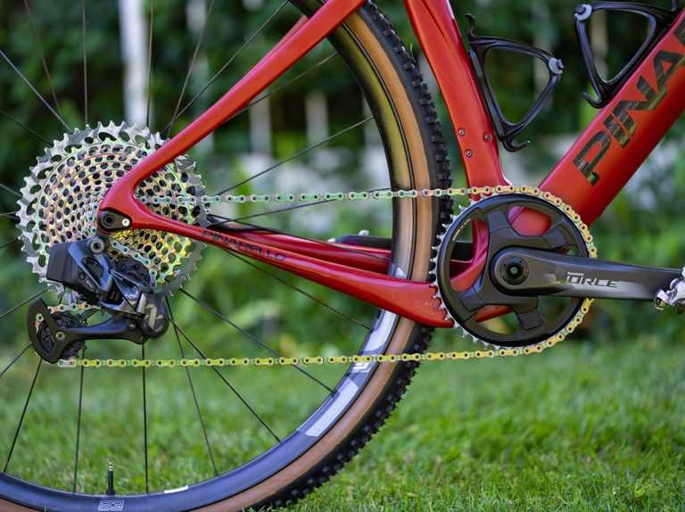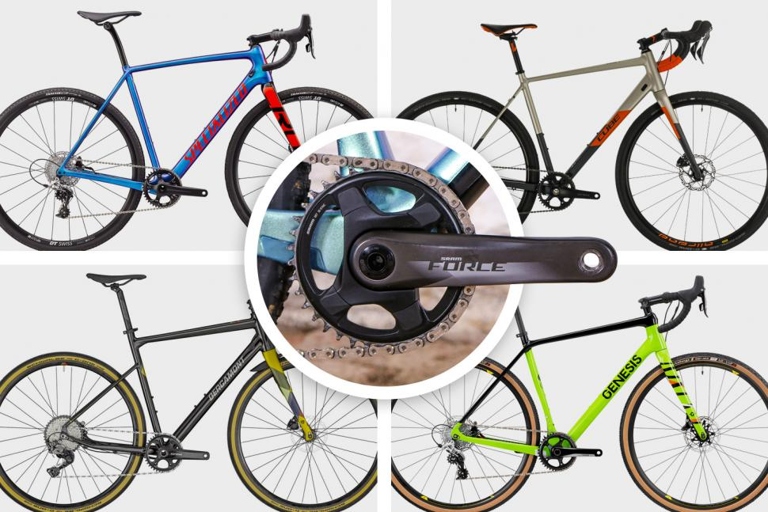Cyclocross bikes are designed to be ridden on a variety of terrain, including pavement, dirt, and grass. They typically have drop handlebars and 700c wheels, and most importantly, they have gears. The number of gears on a cyclocross bike varies depending on the model, but they typically have between 10 and 12 speeds. This makes them ideal for riders who want the versatility to ride on a variety of terrain.
Cyclocross Gears
Cyclocross is a type of bike racing that is done on a variety of terrain, including grass, mud, and sand. The bikes used in cyclocross have gears that allow the rider to change their speed and pedaling power to suit the conditions of the race. The number of gears on a cyclocross bike varies, but most have between 10 and 12 gears.
2x Drivetrain for Cyclocross Bikes
This allows you to maintain a high cadence when riding on flat or hilly terrain. Cyclocross bikes typically have two chainrings (sometimes referred to as a 2x drivetrain) with a wide range of gears to choose from.
Benefits to a 2x Drivetrain
This can be helpful when trying to maintain a high cadence while racing. This can be especially helpful when racing on a course with a lot of elevation changes or tight turns. Additionally, a 2x drivetrain provides more precise shifting than a 1x drivetrain. The biggest benefit of a 2x drivetrain on a cyclocross bike is the increased range of gears.
Drawbacks to a 2x Drivetrain
One is that it can be more difficult to find the right gear when you’re in the middle of a race and trying to go as fast as possible. Another drawback is that a 2x drivetrain can be more expensive than a 1x drivetrain. There are a few drawbacks to having a 2x drivetrain on a cyclocross bike.
1x Drivetrain for Cyclocross Bikes
1x drivetrains for cyclocross bikes are becoming increasingly popular, as they offer several advantages over traditional 2x or 3x drivetrains. This also makes them much lighter, as there is no need for a front derailleur or extra chainrings. Additionally, 1x drivetrains provide more ground clearance, which is beneficial for riding over obstacles. Perhaps most notably, 1x drivetrains are much simpler and easier to maintain, as there is only one chainring and one derailleur to worry about.

Firstly, they typically offer a narrower gear range than 2x or 3x drivetrains, so they may not be ideal for very hilly courses. Secondly, 1x drivetrains can be more expensive than traditional drivetrains, as the components can be more difficult to find. There are a few drawbacks to 1x drivetrains, however.
If you’re considering a 1x drivetrain for your cyclocross bike, weigh the pros and cons to decide if it’s the right choice for you.
Benefits to a 1x Drivetrain
1x drivetrains are becoming increasingly popular in the world of cyclocross. There are many benefits to using a 1x drivetrain on your cyclocross bike.
This means that there are fewer parts to break or malfunction. This also makes 1x drivetrains much easier to maintain. First and foremost, 1x drivetrains are much simpler than traditional drivetrains.

Another benefit of 1x drivetrains is that they are much lighter than traditional drivetrains. This is because there are fewer parts and the parts that are used are typically smaller and lighter. This can give you a significant advantage when racing.
Finally, 1x drivetrains offer a wider gear range than traditional drivetrains. This allows you to better utilize the gears you have available, which can be a major advantage when racing. This is because the chainring is typically much larger on a 1x drivetrain.
Drawbacks to a 1x Drivetrain
Additionally, 1x drivetrains are typically more expensive than 2x or 3x drivetrains, and they also require more maintenance due to the increased number of moving parts. One of the main drawbacks of a 1x drivetrain is the reduced gear range when compared to a 2x or 3x drivetrain. This can make it difficult to find the right gear for climbing or descending hills, and can also make it difficult to maintain a comfortable cadence when riding on flat or rolling terrain.
Single-speed CX Gearing for a Cyclocross Bike
This can be a great option for a number of reasons. A single-speed cyclocross bike is a bike that has only one gear. First, it is a very simple bike to maintain and second, it can be a very lightweight bike. Third, it can be a great option for racing as it can help you save energy on the uphills and maintain speed on the flats and downhills.
Benefits of a Singlespeed CX bike
A single-speed cross bike has several benefits that make it a great choice for many cyclists. Additionally, single-speed cross bikes tend to be more durable and require less maintenance than bikes with multiple gears. For starters, a single-speed eliminates the need for a derailleur and shifters, which can save weight and simplify the bike.
Another advantage of a single-speed cross bike is that it can be easier to ride in muddy or sandy conditions, since there are no gears to clog up with dirt and debris. And, because you only have one gear to worry about, shifting is one less thing you have to think about when you’re racing or riding in challenging conditions.

A single-speed cross bike is a great choice for many cyclists, offering simplicity, durability, and easy maintenance. If you’re considering a single-speed cross bike, be sure to choose the right gear ratio for your riding style and the terrain you’ll be riding on.
Drawbacks to a single-speed cx bike.
One is that you will have to be more careful when shifting your gears since you only have one gear to work with. Another drawback is that you may not be able to ride as fast as you could with a bike that has multiple gears. This is because you will only be able to pedal at one speed, which may not be fast enough for some terrain. There are a few drawbacks to having a single-speed cyclocross bike. This can be a bit tricky, especially if you are new to cyclocross biking.
Which Gearing Should You Choose for Your CX Bike?
If you’re mostly riding on flat or rolling terrain, you’ll want to choose a gear ratio that’s good for both speed and climbing. If you’re a more aggressive rider, you’ll want to choose a gear ratio that’s good for speed. When it comes to choosing the right gearing for your cyclocross bike, there are a few things to consider. The second thing to consider is your riding style. If you’re a more conservative rider, you’ll want to choose a gear ratio that’s good for climbing. If you’re mostly riding on hilly or mountainous terrain, you’ll want to choose a gear ratio that’s good for climbing. The first is the terrain you’ll be riding on. Lastly, you’ll want to consider your budget. If you’re on a tight budget, you may want to choose a less expensive option.
Frequently Asked Questions
1. What is a cyclocross bike?
A cyclocross bike is a type of bicycle designed for racing on a variety of surfaces, including dirt, grass, and pavement. They typically have wider tires than road bikes, and they often have features that make them more comfortable and easier to control on off-road terrain.
2. Do cyclocross bikes have gears?
Yes, cyclocross bikes typically have gears, which can be helpful when riding on different types of terrain. The number of gears on a cyclocross bike varies, but most have at least 10 speeds.
3. Why are gears important on a cyclocross bike?
Gears can be important on a cyclocross bike because they allow you to control your speed and pedaling effort on different types of terrain. For example, if you’re riding on a dirt trail, you might want to use a lower gear to make it easier to pedal. Or, if you’re going downhill, you might want to use a higher gear to go faster.
4. How do I shift gears on a cyclocross bike?
Shifting gears on a cyclocross bike is similar to shifting gears on a road bike. Most cyclocross bikes have shifters that are built into the brake levers, so you can shift gears without taking your hands off the handlebars. To shift up to a higher gear, you’ll need to push the lever away from the handlebar. To shift down to a lower gear, you’ll need to pull the lever toward the handlebar.
5. What are some other important features of cyclocross bikes?
In addition to gears, cyclocross bikes often have features that make them more comfortable and easier to control on off-road terrain. For example, many cyclocross bikes have wider tires than road bikes, which can provide more traction on loose or slippery surfaces. Additionally, cyclocross bikes often have cantilever or disc brakes, which are more effective than traditional rim brakes in wet or muddy conditions.
Final thoughts
In conclusion, cyclocross bikes do have gears. The number of gears on a cyclocross bike varies depending on the make and model, but most have between 10 and 12 gears. Cyclocross bikes also have a higher bottom bracket than road bikes, which helps to keep the pedals clear of obstacles.
